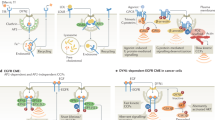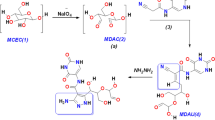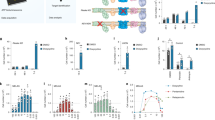Abstract
Although adenosine (Ado) is being recently recognized as a potent inducer of apoptosis, molecular mechanism of apoptosis by Ado remains to be elucidated. In this study we observed that c-Myc was rapidly down-regulated in the apoptosis in human promyelocytic leukemia HL-60 cells treated with Ado. To establish the molecular and biochemical mechanisms of apoptosis, we tested the specific effects of several antagonists of Ado receptors or inhibitors of Ado transporter on the induction of apoptosis. Treatment of dipyridamole (DPD), an Ado transport inhibitor, effectively suppressed both c-Myc reduction and DNA fragmentation, suggesting that the induction of apoptosis and down-regulation of c-Myc is mediated by active Ado transporter. It was another evidence supporting the entrance of Ado into cells undergoing apoptosis that Ado cytotoxicity was potentiated by a addition of methylation cycle intermediates. These results suggest that the active Ado transporter-mediated Ado entrance into HL-60 cells leads to the induction of apoptosis through down-regulation of c-Myc.
Similar content being viewed by others
Article PDF
Author information
Authors and Affiliations
Rights and permissions
This is an Open Access article distributed under the terms of the Creative Commons Attribution Non-Commercial License (http://creativecommons.org/licenses/by-nc/3.0/) which permits unrestricted non-commercial use, distribution, and reproduction in any medium, provided the original work is properly cited.
About this article
Cite this article
Hong, SH., Jeong, SY., Ahn, SG. et al. Active adenosine transporter-mediated adenosine entrance into HL-60 cells leads to the induction of apoptosis through down-regulation of c-Myc. Exp Mol Med 29, 183–190 (1997). https://doi.org/10.1038/emm.1997.28
Published:
Issue date:
DOI: https://doi.org/10.1038/emm.1997.28



